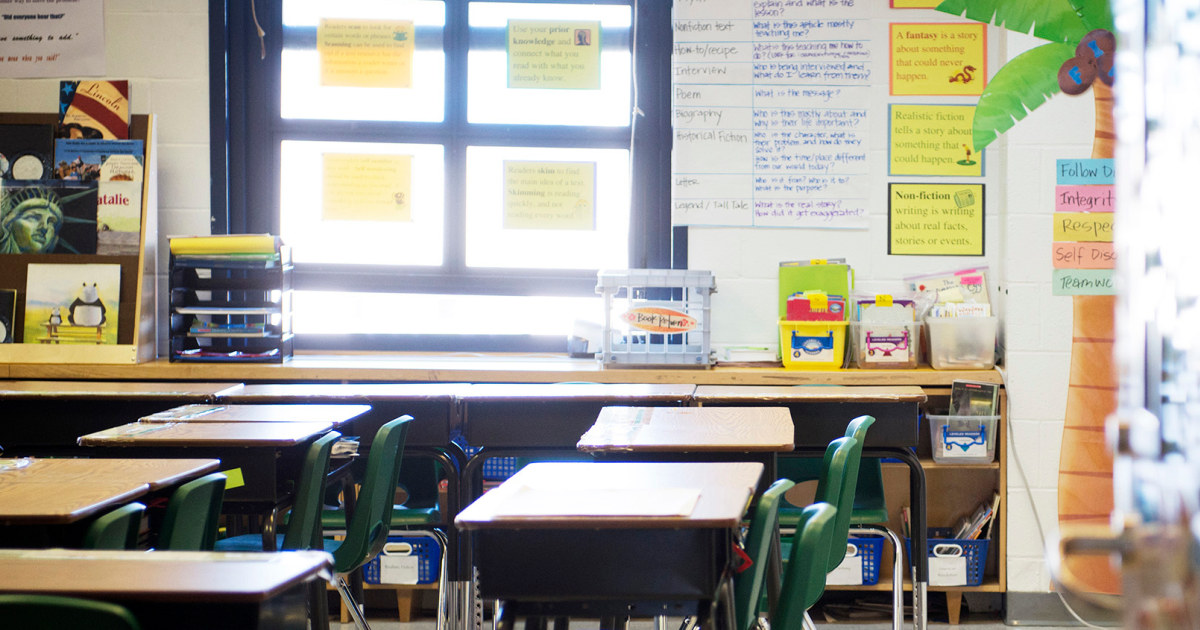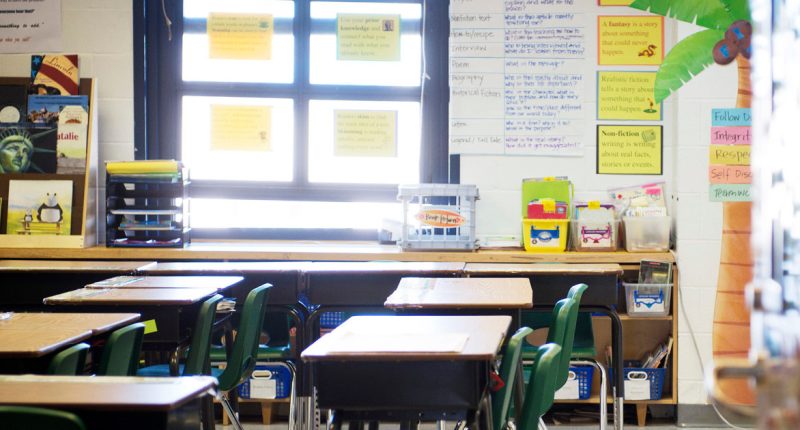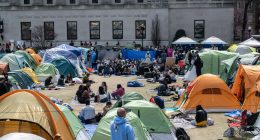
When classes started this week in Florida’s Polk County school district, fourth-grade teacher Emily Heath and her students returned to a sweltering classroom with faulty air conditioning and temperatures in the 80s.
The heat was hard for Heath’s students to bear, she said.
“They say, ‘It’s too hot in here. I can’t focus. I can’t do my work. My head hurts. I’m sweating. I’m thirsty,'” Heath said.
Even in a state that’s used to hot weather this time of year, “the temperatures that are in these rooms, it’s not safe and it’s not beneficial for the kids,” Heath said.
Teachers unions and educators are sounding the alarm about sweltering conditions in classrooms as the school year kicks off following a summer that wrapped the country in record-setting heat.
The issue of excessive heat in classrooms is not new, as in previous years aging school buildings with inadequate air conditioning have led schools to shut down early and switch to remote learning.
But some educators said the longer periods of hot weather, particularly in places that haven’t historically experienced multiday heat waves coupled with inadequate cooling systems, are making it difficult to teach and are putting students even more at risk.
“Kids and staff and teachers are feeling physically sick and lethargic, and just not being able to have that conducive, exciting learning environment that we should have at the very beginning of the school year,” said Stephanie Yocum, president of the Polk Education Association, the teachers union.
Research has shown that hot classrooms can impair student learning. In one study published in 2020, researchers found that “students who experience hotter temperatures during the school year before their exams exhibit reduced learning” and that students scored lower with each additional day of temperatures around 80 degrees or above. The study also found that heat “has substantially larger impacts on the achievement of students in lower-income school districts,” especially Black and Latino students.
Tawni Eckley, a fourth-grade teacher in Loveland, Colorado, returned to her unconditioned classroom in a brick school building this week and a thermostat that on Thursday read 84 degrees.
“My thermostat in my room has never gotten to 84 before. I’ve never seen it that high,” she said. “It’s very difficult to learn when your body can’t regulate its own temperature.”
Eckley said that in the days since students have returned, she has heard teachers on school walkie-talkies saying they need to send their students to the nurse because of headaches from the heat.
The multiple fans in her classroom provide little relief, she said.
“Their resilience for learning goes down and so I feel like my ability to actually be able to engage them academically goes down quite a bit,” Eckley noted.
By the end of the day, even the teachers are red-faced and sweaty, she said.
Eckley said that while her district is doing what it can to help, budgetary restrictions limit their ability to do more.
“They’re doing the best they can with the money that they have, but the money just isn’t there,” she said.
A 2021 report from the Center for Climate Integrity found that more than 13,700 public schools that did not need cooling systems in 1970 now have installed HVAC systems or will need to install one by 2025, at a cost of over $40 billion. The report also found that an additional 13,000 schools or more will need to upgrade their existing HVAC systems, at a cost of more than $414 million.
“With climate change, you now have more and more hot days in the spring and fall where learning is definitely compromised,” said Richard Wiles, the president of the Center for Climate Integrity. “As climate change accelerates, more schools are going to have to be closed because of excess heat, or school districts will be forced to spend potentially hundreds of millions of dollars to keep the classrooms bearable.”
A 2020 national survey from the Government Accountability Office found that about half of public school districts needed to update or replace multiple systems like HVAC or plumbing, and about a third of schools needed HVAC system updates.
“HVAC and environmental issues are an enormous concern in schools,” Mike Pickens, the executive director of the National Council on School Facilities, said.
Kelly Dutro, a high school teacher in Albuquerque, New Mexico, said she has been dealing with air conditioning issues since school began for students on Aug. 3.
“The heat makes the students super tired,” Dutro said. “It makes it hard for them to focus and greatly decreases classroom engagement. They’ve also complained about getting headaches from the exposure to the heat.”
“It’s rough. It’s really, really rough,” she said.
In Polk County, teachers are organizing to improve classroom conditions.
The union has filed a class-action grievance against Polk County Public Schools because of the heat in classrooms.
As of Tuesday, 51 school sites in the district did not have fully functioning air conditioning, about a third of all schools in the district, the Polk Education Association said.
“This has never happened in the time that I’ve been president here for the union,” said Yocum, who has led the union for four years.
Yocum and Heath said they have spoken to teachers with classroom temperatures reaching 90 degrees.
Polk County Public Schools said in a statement Thursday that it has been “experiencing some of the hottest temperatures in recorded history. This has created a surge in the number of AC issues that we typically experience this time of year.”
The district said that since Aug. 1 it has received 755 work orders for air conditioning issues and has closed more than 600 so far. Some of those work orders involved rooms that had working air conditioning, “but in the extreme heat we’ve been experiencing, AC systems can struggle to cool rooms more than 15-20 degrees,” it said.
The district said that while maintenance crews are working to finish the remaining repairs, it is also assigning maintenance staff from other trades to assist with the work orders and has authorized overtime pay for nights and weekends.
Nina Esposito-Visgitis, the president of the Pittsburgh Federation of Teachers, said the lack of ventilation in schools is not only a health issue but also an equity concern. In her district, she said, “out of 54 buildings, only 12 of them are air conditioned.” The district did not immediately reply to a request for comment.
“I think it is such an awful equity issue that we have kids trying to learn in these schools,” she said. “We should all have air conditioning. We have to show our kids we value them by protecting them.”
Source: | This article originally belongs to Nbcnews.com










